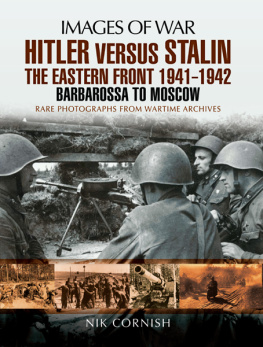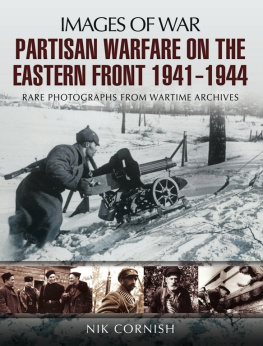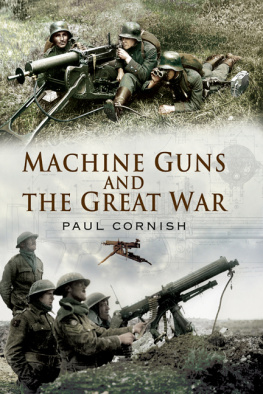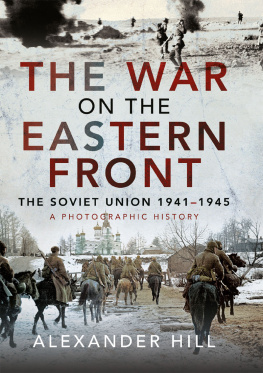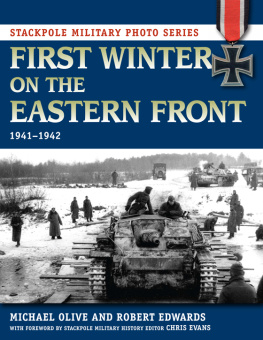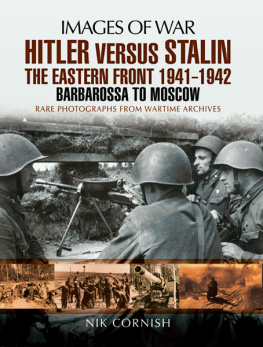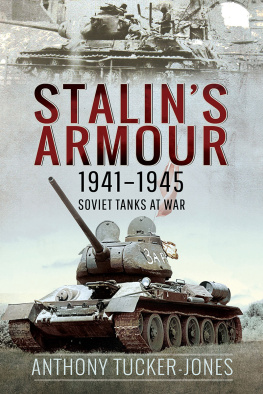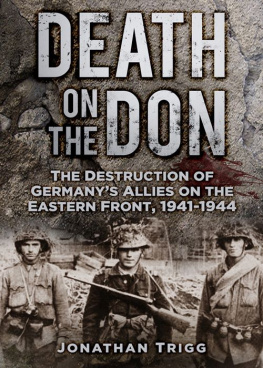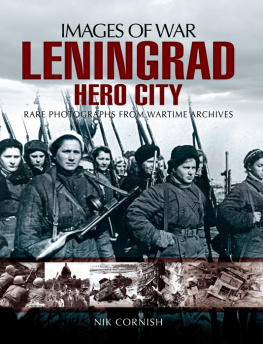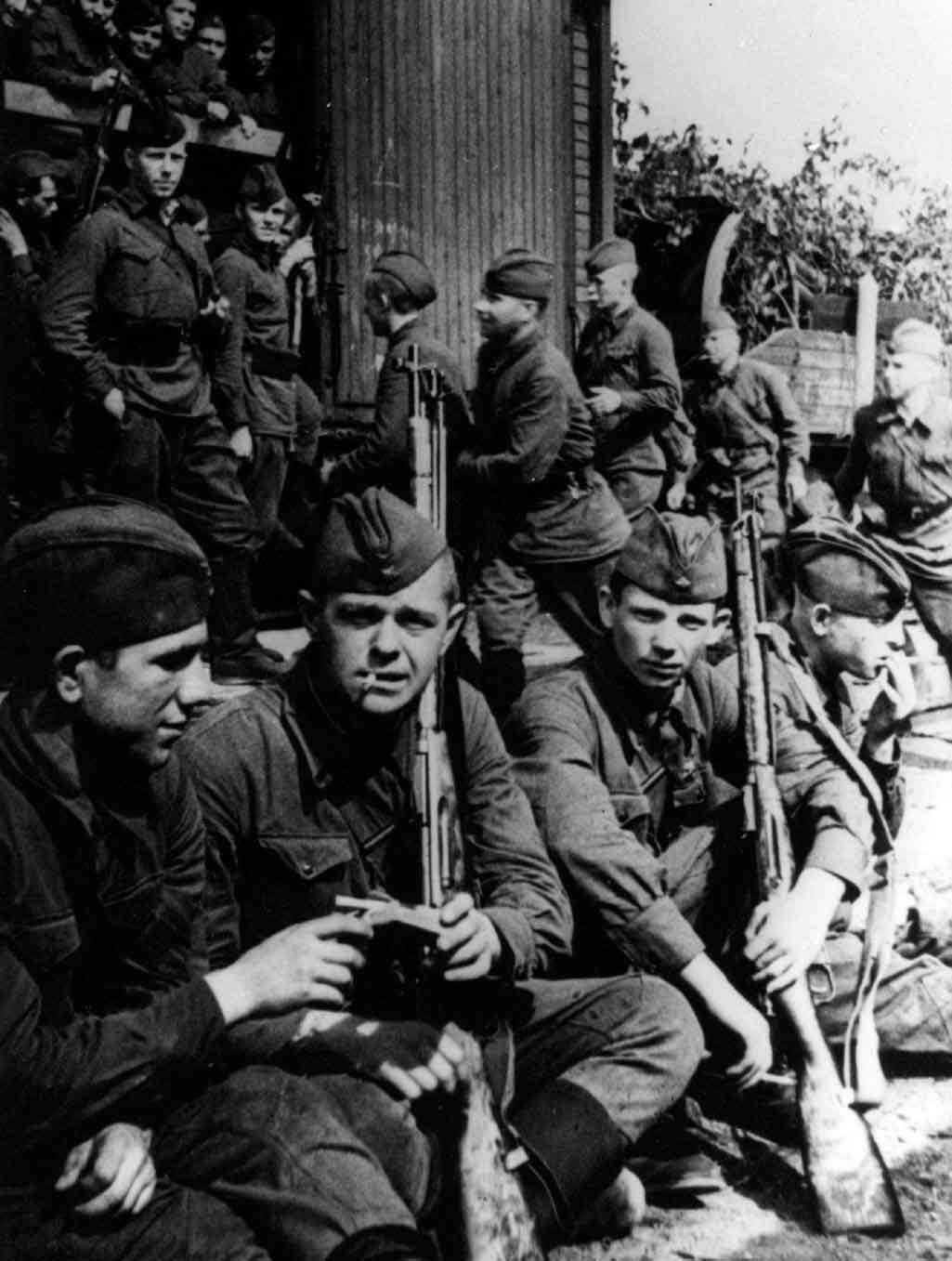
Newly raised militia units from Leningrad.
This book is dedicated to my mum, Dorothy, to Liz and to our children, James, Charlotte and Alex
First published in Great Britain in 2016 by
PEN & SWORD MILITARY
an imprint of
Pen & Sword Books Ltd,
47 Church Street, Barnsley,
South Yorkshire.
S70 2AS
Copyright Nik Cornish 2016
ISBN: 978-1-78346-398-5
PDF ISBN: 978-1-47388-144-0
EPUB ISBN: 978-1-47388-143-3
PRC ISBN: 978-1-47388-142-6
The right of Nik Cornish to be identified as Author of this Work has been asserted by him in accordance with the Copyright, Designs and Patents Act 1988.
A CIP catalogue record for this book is available from the British Library
All rights reserved. No part of this book may be reproduced or transmitted in any form or by any means, electronic or mechanical including photocopying, recording or by any information storage and retrieval system, without permission from the Publisher in writing.
Typeset by Mac Style Ltd, Bridlington, East Yorkshire
Printed and bound in Great Britain by CPI
Pen & Sword Books Ltd incorporates the imprints of
Pen & Sword Aviation, Pen & Sword Family History, Pen & Sword Maritime, Pen & Sword Military, Pen & Sword Discovery, Wharncliffe Local History, Wharncliffe True Crime, Wharncliffe Transport, Pen and Sword Select, Pen and Sword Military Classics
For a complete list of Pen & Sword titles please contact:
PEN & SWORD BOOKS LIMITED
47 Church Street, Barnsley, South Yorkshire, S70 2AS, England.
E-mail:
Website: www.pen-and-sword.co.uk
Contents
Preface
The concept underlying this book, and the volumes that follow it, is to provide the general reader of military history with a heavily illustrated overview of the war on the Eastern Front between 1941 and 1945. Each book will be self-standing and cover a particular time period during this titanic four-year campaign.
There has never been a war waged with such ferocity in the entirety of human history, indeed it was, as one eminent historian of this conflict entitled it, a clash of Titans. On the one hand the brown-shirted followers of Adolf Hitler, on the other the red-flagged communists of Joseph Stalin. With two such totalitarian regimes, where the power was highly concentrated in the hands of individuals who issued edicts through a vast civilian and military bureaucracy, the manner in which military and political advice was taken and acted upon frequently verged on the erratic.
When the campaign began Hitlers faith in the German General Staff was considerable due to their achievements elsewhere. However, this belief was to deteriorate rapidly as the Russian winter of 1941 took hold and the Red Army first rallied and then mounted a series of successful counterattacks. The result was that Hitler took command of the Wehrmacht and increasingly interfered with the micro-management of operations, often with disastrous effects.
Closeted in the Kremlin, Stalin reacted to the Axis invasion and the manner in which the Red Army almost collapsed by unleashing a reign of terror resulting in a wave of executions and promotions that generated an all-pervasive atmosphere of dread. However, as the Red Army began to fight back and demonstrate itself capable of defeating the enemy, Stalins faith in his commanders abilities increased and he allowed them greater leeway to plan and fight the war while he slowly relaxed his iron grip.
Both dictators had personal but different experiences of warfare Hitler had endured over three years in the front line on the Western Front, whereas Stalin had been a leader, albeit briefly, during the Russian Civil War around the city formerly known as Tsaritsyn. In 1942 Tsaritsyn was known as Stalingrad the city that would provide the venue for the showdown between the Boss and the Austrian Corporal.
Acknowledgements
The usual suspects to whom I am indebted include Dmitry Belanovsky, Norbert Hofer, Stephen Perry and Andrei Simonov many thanks boys. Further thanks are due to Alex Cornish for many hours of technical assistance coupled with interesting comments and criticisms.
The debt that I owe to the staff members of the Central Museum of the Armed Forces and the Krasnogorsk Archive in Moscow is immense thank you all.
Picture Credits
All images are by Nik Cornish at www.Stavka.org.uk aside from:
Courtesy of the Central Museum of the Armed Forces, Moscow via Stavka:
p. xi B, p. 27 B, p. 36 T and B, p. 46 T, p. 48 B, p. 52 T and B, p. 57 B, p. 63 B, p. 71 B, p. 78 T, p. 79 T, p. 80 T and B, p. 81 T and B, p. 82 B, p. 84 T, p. 85 B, p. 86 B, p. 92 T and B, p. 93 B, p. 94 T and B, p. 95 T, p. 96 T, p. 97 B, p. 98, p. 99 T, p. 101 T and B, p. 102 T and B, p. 107 B, p. 112 B, p. 113 T, p. 114 B, p. 116 T, p. 121 T and B, p. 127 T, p. 128 B.
The fonds of the RGAKFD in Krasnogorsk via Stavka: frontispiece, p. 23 B, p. 40 T, p. 49 T, p. 67 B, p. 68 T and B, p. 72 T and B, p. 122 T, p. 124 T and B, p. 125 T, p. 127 B, p. 128 T.
Courtesy of TASS:
p. 69 T, p. 123 T.
Introduction
During the summer of 1939 the world was shocked to hear of the Molotov-Ribbentrop Pact: this effectively declared that the USSR and the Third Reich would remain at peace with one another and divide Eastern Europe into spheres of influence. The first nation to suffer under this arrangement was Poland, which was overrun from east and west and reduced to impotence. Following this success the Red Army was launched on an ill-starred winter campaign to conquer Finland. However, the outcome was disastrous for the USSR for, despite eventually defeating the Finns, it was at such cost that the results were not worth the effort. The Baltic States were occupied, without bloodshed, during the spring of 1940, as was the Romanian province of Bessarabia some weeks later. The borders of the USSR had advanced several hundred kilometres to the west reincorporating former Tsarist Russian lands and creating a buffer zone against any likely attack from Germany.
The success of Germany in the west and north had enabled the USSR to move westwards. However, having overrun France, the Low Countries, Denmark and Norway, Hitlers ambition was only wetted for further conquests. Although Britain stood isolated and apparently ripe for the plucking, the Fhrer turned his attention once more to the east and the lebensraum of the Russian steppes.
During the summer of 1940, flushed with the apparently easy victories to date, Hitler ordered selected staff officers to draw up plans for the destruction of the USSR. Under the code name of Operation Barbarossa, the plan was more of a series of flexible guidelines than a prescriptive set of instructions. It was optimistically assumed that the Red Army would swiftly collapse when faced with the onslaught of experienced blitzkrieg veterans. An eventual stop-line was pencilled in, running roughly from Archangel in the north, along the crest of the Ural Mountains down to the shores of the Caspian Sea. Beyond that the rump of the Soviet state was expected to wither and die amidst the forests and tundra of Siberia. The Caucasus, as far as the Turkish border, would provide a land bridge into the rear of British possessions in the Middle East that would yield up the crude oil so vital for mechanized warfare.
More than a hint of overconfidence was apparent during the autumn and winter of 19401 in Berlin. As goods and luxuries flowed in from the new conquests, the civilian population enjoyed a very merry Christmas and looked forward to a prosperous New Year. Although Operation Barbarossa was designed as a predominantly German affair, the Reichs allies also wanted to share in the spoils. Slovakia, Italy and Romania were all eager to be involved and were prepared to contribute men and materiel to the cause. Finland, not formally an ally of Germany but smarting from the Winter War of 193940, was keen to regain her lost territories. Nor was Turkey an innocent bystander as the lure of regaining land in the Caucasus was an unstated desire that, should the USSR be on the point of collapse, would likely be satisfied.
Next page
